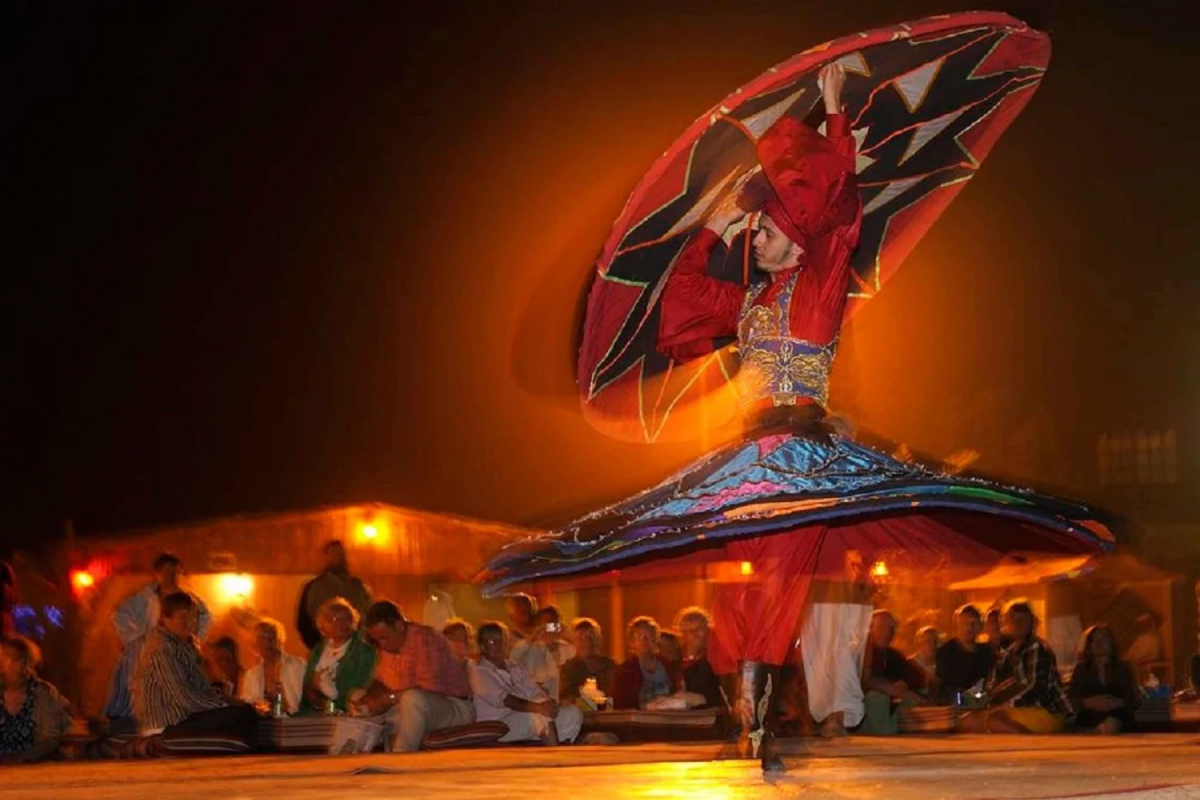The Tanoura dance, deeply rooted in Egyptian cultural heritage, spins its way into the hearts of spectators with mesmerizing grace and spiritual symbolism. Originating from Sufi traditions, this folk dance is a celebration of spirituality, unity, and the rhythm of life itself. As we delve into the enchanting world of Tanoura, we uncover its rich history, cultural significance, and also the profound meanings encoded in its movements.
History and Origins
The Tanoura dance traces its origins to the ancient mystic rituals of the Sufi order, specifically the Mevlevi sect, which is also known as the Whirling Dervishes.transition words add
Cultural Significance
In Egyptian culture, the Tanoura holds deep cultural significance. Often performed during festive occasions and spiritual ceremonies, it serves as a poignant symbol of tradition and spirituality.
Rituals and Symbolism
Central to the dance are its intricate symbols and rituals. The spinning motion represents the soul’s journey towards spiritual awakening and union with the divine. Each whirl of the dancer’s body signifies a step closer to transcendence, accompanied by rhythmic music and chants that create a spiritual trance.
Performance and Techniques
The Tanoura is characterized by its hypnotic spinning movements, often performed by male dancers who undergo rigorous training to master the art of balance and endurance. The dancers use elaborate costumes, adorned with vibrant colors and intricate patterns, enhancing the visual spectacle of their performance.
Modern Adaptations and Global Influence
In recent years, the Tanoura dance has gained international recognition, captivating audiences worldwide with its blend of artistry and spirituality.Beyond its cultural roots in Egypt, the dance has inspired modern interpretations and adaptations. In addition, it has integrated diverse musical influences and contemporary choreography, all while preserving its core spiritual essence.
Preservation of Tradition
Efforts to preserve the Tanoura dance highlight its enduring significance. Cultural institutions and performers strive to pass down this art form, ensuring its legacy as a symbol of unity.
Tourist Attractions and Impact on Tourism
The allure of the Tanoura dance extends beyond cultural preservation, additionally contributing significantly to Egypt’s tourism industry. Tourists flock to traditional venues and festivals to witness the captivating spectacle of Tanoura, immersing themselves in Egypt’s rich cultural tapestry.
Challenges and Future Prospects
Despite its popularity, the Tanoura dance faces challenges in the modern world. For instance, it struggles with commercialization. Additionally, there is a pressing need for sustainable preservation.
Conclusion
The Tanoura dance embodies Egypt’s rich cultural heritage and spiritual legacy, captivating with its rhythmic symbolism and profound depth.
Through its whirls and beats, the Tanoura dance invites us to embrace humanity’s unity and cosmic harmony, transcending borders to connect souls in a celebration of life.



